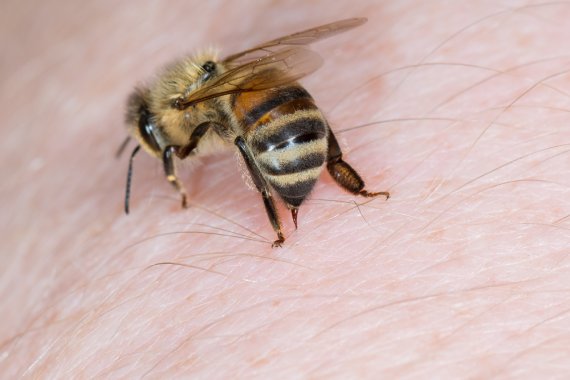© Shutterstock
The researcher was working on her PhD research. She is doing better now, says her colleague Coby van Dooremalen, senior bee scientist at Biointeractions and Plant Health. However, the scientist is still recovering and could therefore not react herself.
What are the chances of getting stung as a researcher?
‘We are all very careful, but the risk of getting stung as a researcher are somewhat more significant than for an average bee keeper, for example. We disturb the population much more often to perform specific measurements. In most cases, such a sting mainly hurts and causes a local swelling, but it also happens that a person develops an allergy after getting stung several times. The chances of having an allergic reaction the first time you are stung are very low. We know who is allergic among our permanent staff, but it is difficult to know for all guest, students and interns. We only discover that when someone gets stung.’Which measures do you take to minimise the risks of getting stung? ‘We all fully covered up, but it still possible for a bee to slip in. Bees are very curious and crawl everywhere in search of food. In this case, the researcher was stung in a finger, but her body reacted much more vehemently that would normally be expected. We have very strict protocols. One is for the general presence of epinephrine autoinjectors. Those are not meant to be used as treatment but to gain some time if the ambulance is far away. They can only be used by a doctor or after consulting with a 112-emergency assistant, as using one brings risks with it as well.’
I’m not sure whether an epinephrine autoinjector was present this time. There should have been one according to the protocol, but it remains a difficult aspect at locations without facilities and with the limited number of injectors we have at our disposal. In this case, it wasn’t necessary, as the ambulance arrived quickly. The protocol was resent to all our staff to make sure that it is set in everyone’s minds. Allergic staff can follow a desensitisation therapy, but they still need to remain vigilant.’
Why work with bees?
‘There is obviously good reason for researchers to be willing to work with bees, even at the risk of getting stung occasionally. We are currently researching the resistance of bees to the Varroa mite. This parasite forms a significant threat to honey bees and causes high bee mortality in winter. Bee keepers use pesticides to fight the mite. The worst crisis seems to now be under control, and 50 to 70 percent of bee keepers do not face high winter mortalities anymore. We are researching whether we can arrive at bee populations who are naturally resistant to the mite through natural selection, in order to stop the necessity for pesticides. A perfect situation would be without mites or pesticides, of course. Within WUR’s Nationaal Honingprogramma (‘National Honey Programme’), we already have several populations that are resistant to the mite. We now investigate what the bees in those populations do to fight the mites and whether there are specific relations between the bees, mites and viruses.’

